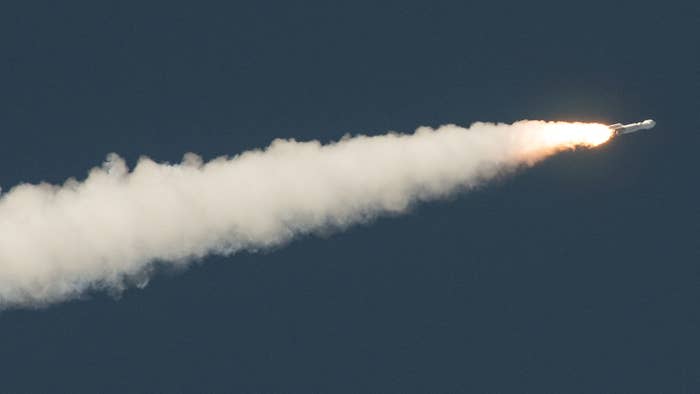
On Monday, a NASA spacecraft filled with asteroid rubble, called Osiris-REx, started its journey back to Earth. It should be here in *checks watch* roughly two-and-a-half years.
Osiris-REx first got to asteroid Bennu in 2018. For two years it flew near/around it. Then it touched down and collected debris. It’s estimated to be holding somewhere between half a pound to a full pound of tiny chunks of the asteroid. That seemingly dinky amount is actually a lot, as the original goal was to collect just two ounces.
The Associated Press writes that the haul will be the biggest for the U.S. since the Apollo crew(s) returned with moon rocks in the late ‘60s/early ‘70s. This also marks the first time that NASA has acquired pieces of an asteroid. Prior to this Japan had done it twice, but did so in very small amounts.
“I’ve been working on getting a sample back from an asteroid since my daughter was in diapers and now she’s graduating from high school, so it’s been a long journey,” said Jason Dworkin, a project scientist for the space agency.
Adding onto that, the principal scientist for the operation, Dante Lauretta, said “We have gotten used to being at Bennu and seeing new and exciting images and data coming back to us here on Earth.”
Scientists are hopeful that the cosmic loot will help them learn some of the solar system’s secrets. Bennu is about 1,600 feet wide, and is believed to be 4.5 billion years old. It’s thought that it broke off from a bigger asteroid. The pieces of it coming back to Earth could provide info on how planets formed and how life emerged on Earth. Scientists think asteroids smashed into Earth as it formed, bringing with them elements like water.
As for Osiris-Rex, at this time it’s about 291 million miles from Earth. Its journey back is going to be considerably lengthier (1.4 billion miles) and will involve it twice circling the sun before, ideally, arriving in a Utah desert on September 24, 2023.
It first launched in 2016 from Cape Canaveral.
Though none of them include plans for sample returns, other planned asteroid projects include a spacecraft named Lucy, which will launch in October and head towards swarms of asteroids by Jupiter. Another craft, known as Dart (standing for Double Asteroid Redirection Test), will head out in November to try and alter the course of an asteroid as a test-run for planetary protection. Finally, next year, a spacecraft called Psyche will be aimed towards a metallic asteroid that shares its name.

